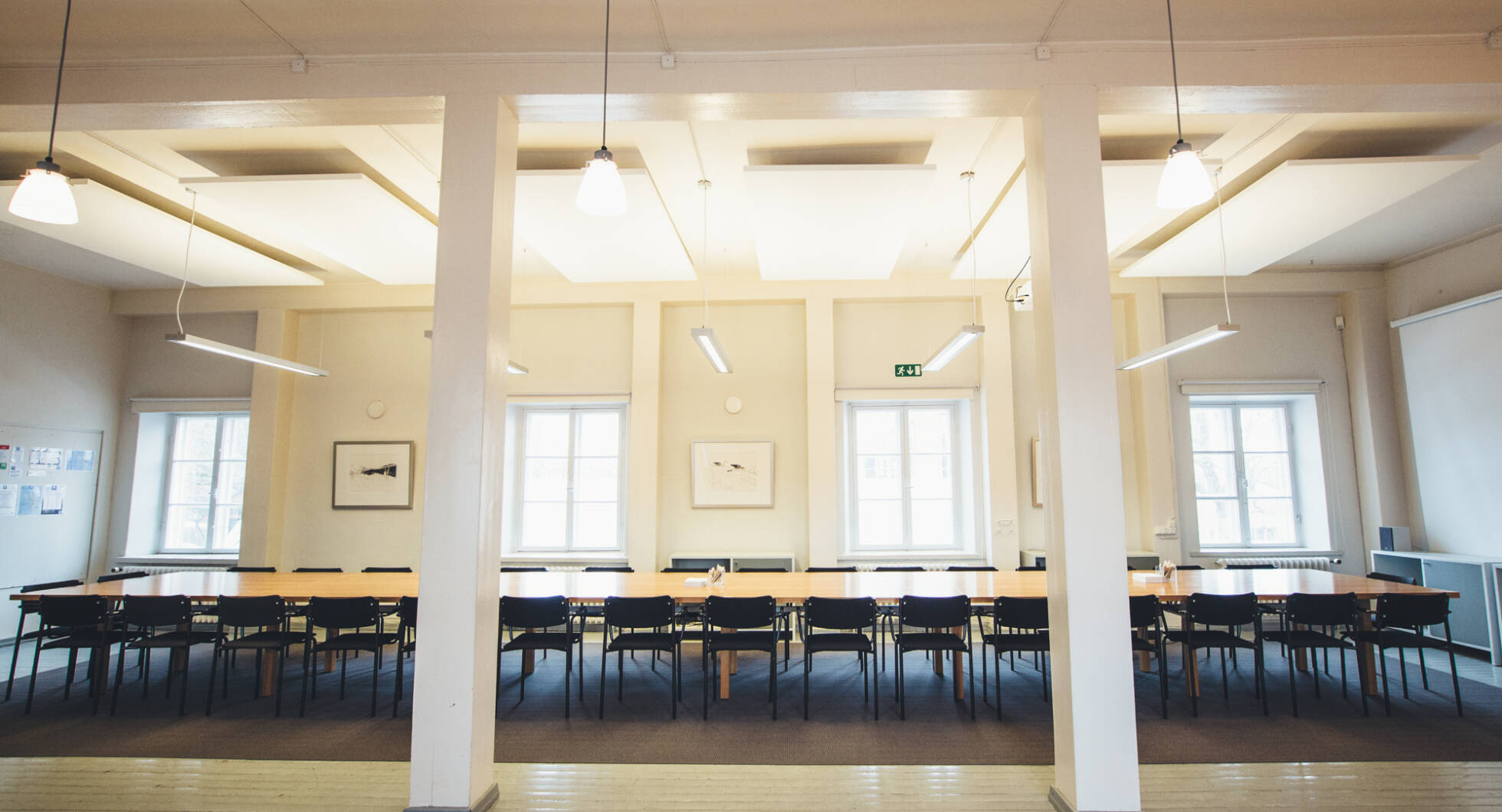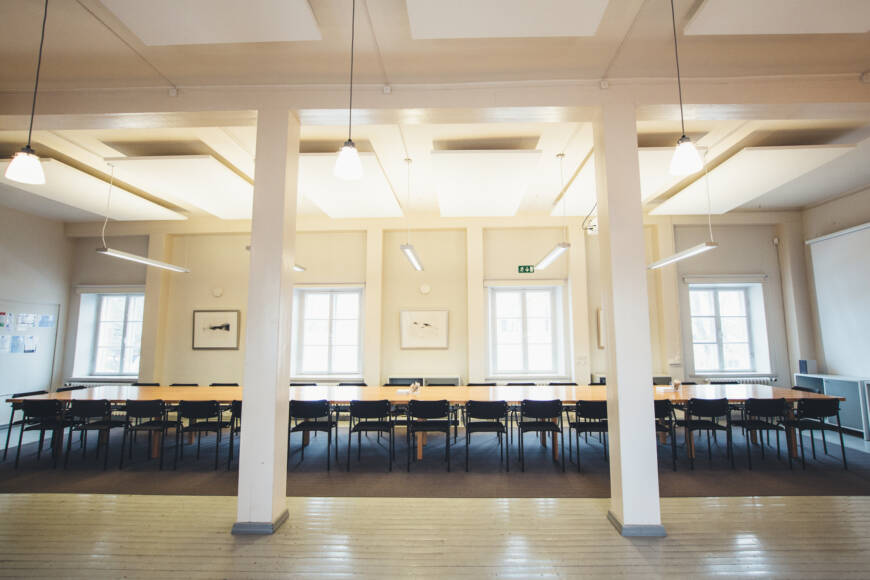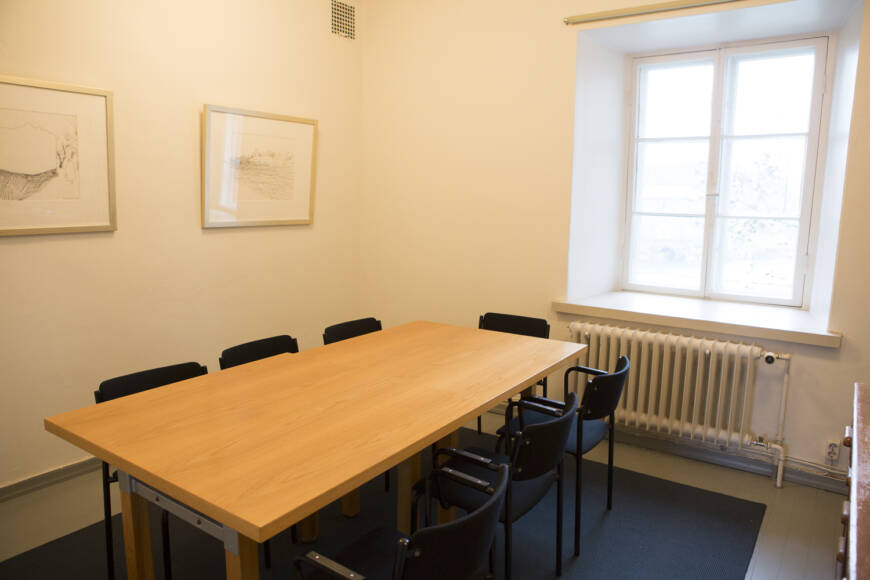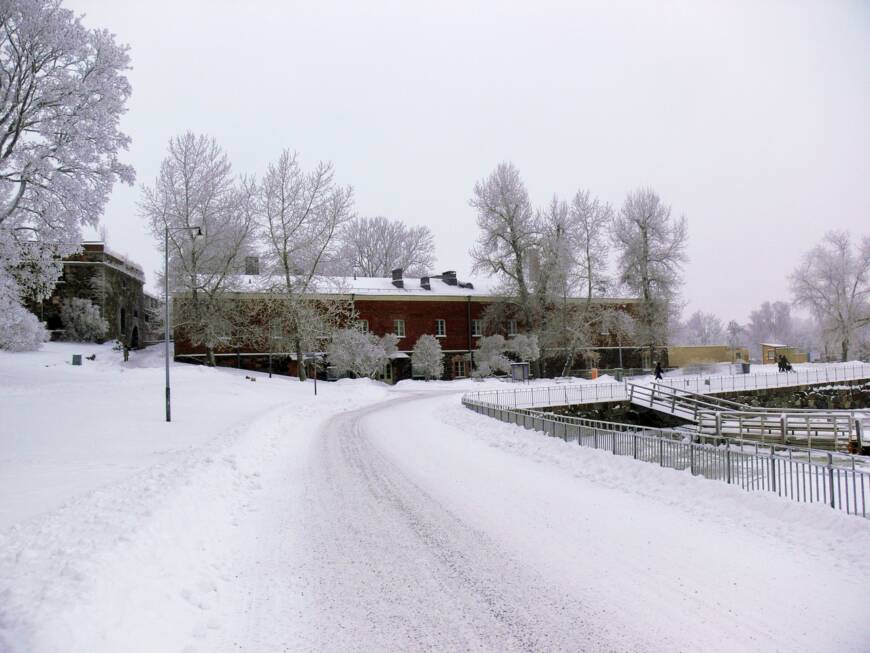
Piirtämö, max. 30
The spacious and light-filled meeting room, surrounded by windows, provides an ideal setting for brainstorming. From the windows, you can enjoy views of the beautiful Artillery Bay. The large conference table in the Piirtämö seats up to 30 people. The space previously served as the office facilities of the Finnish Heritage Agency, and some of the agency’s vintage furniture has been arranged into a charming seating area within the room.


The Piirtämö is located on the upper floor of the Adlerfelt restaurant. Additionally, the Piirtämö includes access to an adjacent small kitchen, a toilet, and a work room. Coffee for your meeting can easily be made on the spot, and restaurant Adlerfelt, located downstairs, is the perfect place for lunch or dining and in summer there is a charming wine terrace.
In a nutshell
- Av-equipment: Video conferencing system with camera, display (98 inches), speakers, Internet connection (WLAN).
- Equipment: Large meeting table and 30 chairs, service tables, kitchenette, toilet facilities, group work room, coffee set. Please check the list of included furniture and equipment for more details on what is covered in the rental price.
- NOTE! Not accessible for people with mobility impairments, as the room is only reachable via stairs.
- Prices: from 500 €



The Traverse Adlerfelt was built in the 1750s and 1770s as part of the outer fortification protecting the Susisaari galley docks. A traverse is a wall, berm, fortification or building perpendicular to the shadow road, blocking direct gun fire in the entrenchment. The traverse divides the defence line into two independent parts. The sea-side façade of Traverse Adlerfelt was built as a defence wall to protect against gunfire from Vallisaari island. The granite casemates of the lower floor had embrasures for cannons and the first floor, built from brick, had a dense row of embrasures for rifles. In the 1780s, more storage space was added to the building for the expanded coastal fleet, and the vaults on the bottom floor were replaced with a wooden intermediate floor. The topmost mansard floor was converted into a normal floor and an attic floor was built on top of it.
The topmost floors burned down in bombardments during the Crimean War, after which the building was lowered to two storeys and covered with a tin roof. The Traverse Adlerfelt, which also operated as the storage for Russian artillery, was transformed into its current appearance in approximately 1864–1866. At the end of the 1800s, the last remaining parts of the caponiere Adlerfelt were torn down.
During the beginning of the Finnish era, the building was home to the canteen of the air force’s aircraft factory, which operated in the docks. In the 1930s, the building was transferred to Valmet Oy to be used as storage and accommodation facilities. When the war reparation industry was at its most active phase in the docks, the docks’ office and the workers’ social premises were located in the building. The canteen was located downstairs. In 1986, the first floor, with the exception of the flat at the south end, was renovated as office facilities for the Finnish Heritage Agency.